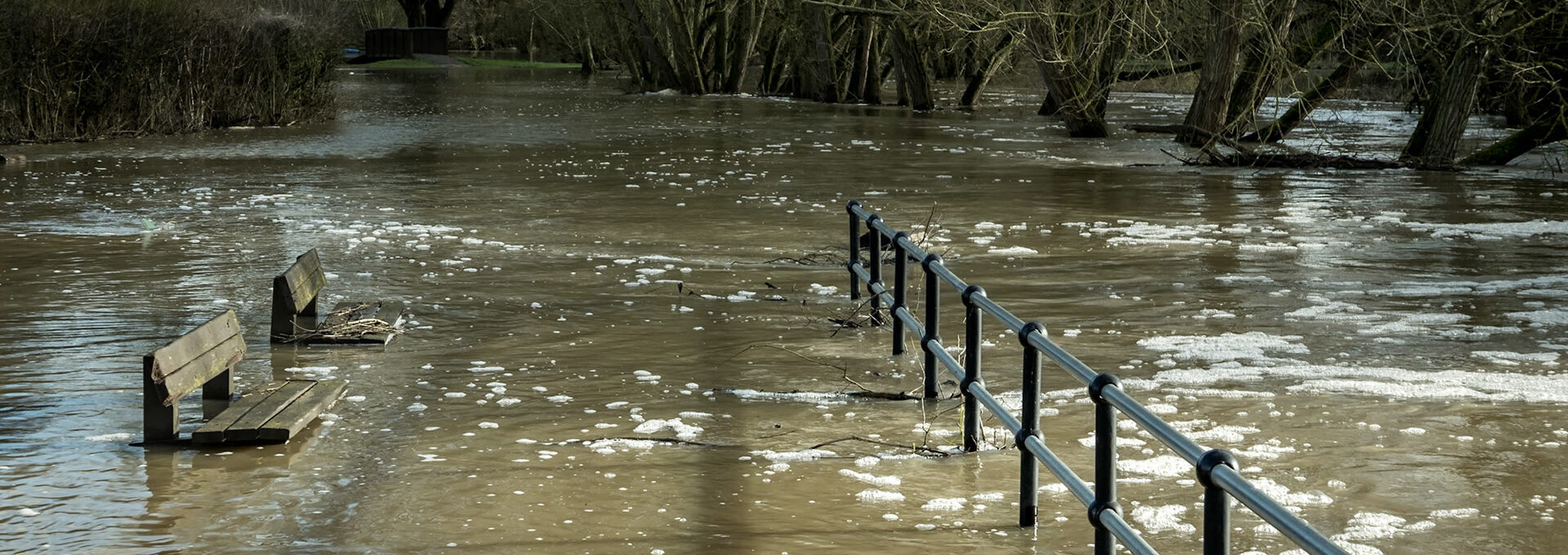
Do you live near the river Great Ouse? The river Great Ouse is known to flood in Buckingham. The three biggest parks in the town, Chandos, Heartlands and Bourton Park all sit alongside the river and in wet weather these parks can begin to flood, with river water covering the green areas and footpaths.
Around once every ten years Buckingham might have a serious flooding event, this is when flooding impacts not just on the parks and low lying roads, but on people’s homes.
It is really important that residents know if their home or business is at risk of flooding and prepare in advance. You have a responsibility to prepare for flooding, including protecting yourself and your home.
How do I find out if my home is at risk of flooding?
You can:
- Use your postcode to check the river and surface water flooding risk for your property.
- Pay the land registry for a flood report about your specific property (there’s a small charge for this)
Even if you’ve already done the above we strongly recommend asking your neighbours! There have been significant or severe floods in Buckingham in 1998, 2007 and 2020. You are likely to have a neighbour who remembers if your street was impacted or not.
Can I get insurance?
Although you may have heard that getting insurance for a home at flood risk can be tricky you should be able to get insurance.
The government has advice for getting insurance in a high flood risk area, if you are still feeling unsure the Association of British Insurers has up to date accurate information that might help you further.
If you are already insured and are worried about your flood risk, call your insurers and ask about their flood risk policy. Make sure the information they have about your property, including how much your contents is worth, is accurate. This will help if you ever have to make a claim.
My home or business is at risk. What can I do to prepare for flooding?
Did you know that you have a responsibility to prepare for flooding, including protecting yourself and your home?
Sign up for flood warnings
You can sign up for flood alerts through the government website.
Sign up for the Buckingham Community Flood Plan
You can sign up to join our community flood plan.
Flood defences
There are several different types of flood defence you could invest in, from flood doors and barriers that stop water from coming in through your door to air brick protection. You could also consider investing in a portable pump. If you aren’t sure where to start, National Flood Forum’s Property Protection Advisor can give you an idea of the kind of defences you could buy and how much they might cost. Although some of these options might seem expensive they can be really effective, and much more useful than sandbags. You might find there is funding available to pay for flood defences.
Sandbags
As an emergency backup, consider having sandbags available. Useful things to have in advance are:
- Empty sandbags
- A large container full of builders sand
- Heavy duty plastic sheeting
- Gaffer tape.
- You must store the sand and bags somewhere under cover, dry, and out of sunlight.
If you do want to use sandbags, make sure you know how to use them. Only fill each bag 2/3rds full, and lay them on top of the plastic sheeting in a brickwork pattern, at least two bags high in front of your door. Video tips on how to lay your sandbags are available.
Where are your important documents?
Think about the most important information you might need in a flood, or items you most want to protect from flood damage, including your insurance documents, medicines and personal ID. Make sure you know where they are. If possible, put them somewhere in your house that would keep safe and dry from any flood, but is still possible to access in a hurry.
Once a year, check that all of your flood defences are in good working order and that any plans you have made are up to date.
What should I do if there is a flood approaching my home?
Put your flood defences in place.
If you don’t have any defences, go to your local builders yards to get sandbags. If you can’t get to the builders yard, call Buckinghamshire Council’s emergency number. Be aware, they might not be able to come straight away.
Make sure you know where your important documents are. If you have time, pack an overnight bag in case you need to leave your home.
Consider moving your car if it’s currently in a location that may flood.
If the flood waters enter your home, call your insurers soon as possible to let them know and start your claim.